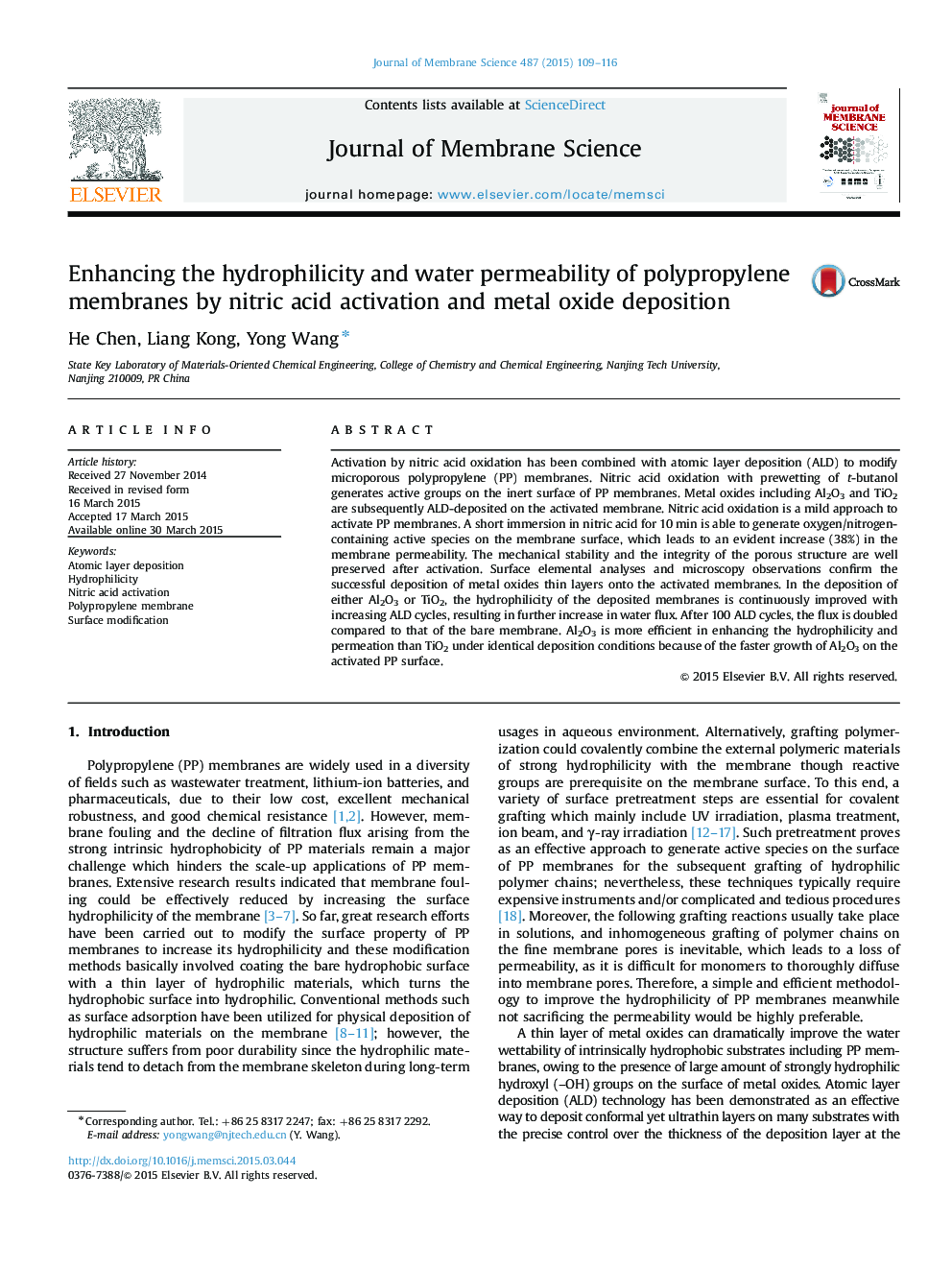| Article ID | Journal | Published Year | Pages | File Type |
|---|---|---|---|---|
| 7021326 | Journal of Membrane Science | 2015 | 8 Pages |
Abstract
Activation by nitric acid oxidation has been combined with atomic layer deposition (ALD) to modify microporous polypropylene (PP) membranes. Nitric acid oxidation with prewetting of t-butanol generates active groups on the inert surface of PP membranes. Metal oxides including Al2O3 and TiO2 are subsequently ALD-deposited on the activated membrane. Nitric acid oxidation is a mild approach to activate PP membranes. A short immersion in nitric acid for 10Â min is able to generate oxygen/nitrogen-containing active species on the membrane surface, which leads to an evident increase (38%) in the membrane permeability. The mechanical stability and the integrity of the porous structure are well preserved after activation. Surface elemental analyses and microscopy observations confirm the successful deposition of metal oxides thin layers onto the activated membranes. In the deposition of either Al2O3 or TiO2, the hydrophilicity of the deposited membranes is continuously improved with increasing ALD cycles, resulting in further increase in water flux. After 100 ALD cycles, the flux is doubled compared to that of the bare membrane. Al2O3 is more efficient in enhancing the hydrophilicity and permeation than TiO2 under identical deposition conditions because of the faster growth of Al2O3 on the activated PP surface.
Related Topics
Physical Sciences and Engineering
Chemical Engineering
Filtration and Separation
Authors
He Chen, Liang Kong, Yong Wang,
